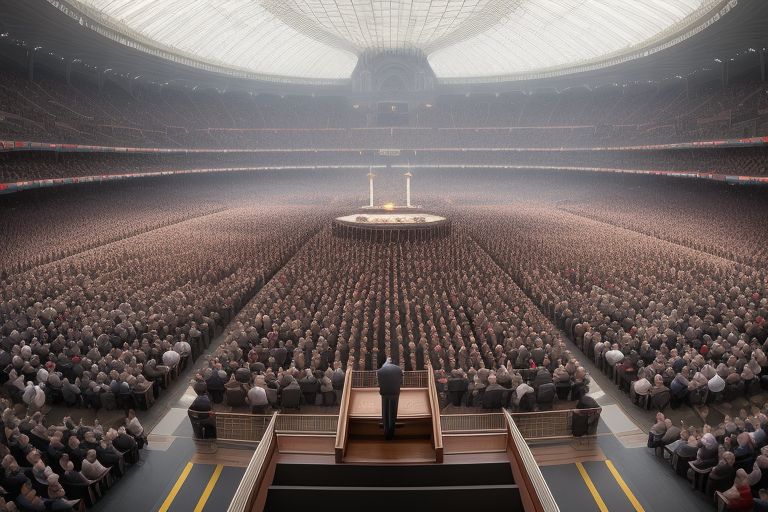Picture this: you’re a music promoter, and you’re confident a band is going to draw a huge crowd. So, you book a massive arena like Madison Square Garden or The Staples Center. The dream is there, but reality hits when you see only a small fraction of the seats filled. Unfortunately, this scenario isn’t just hypothetical; it happens more often than one might think.
Take the 2023 Mudvayne North American tour as a prime example. Originally expecting massive turnouts, they booked venues that could host up to 20,000 fans. However, an average of only around 2,000 people showed up per gig. It reached a point where one of their shows had to be downgraded to a venue a quarter of the original size and it still wasn’t a sell-out.
The Risks and Realities
Overestimating venue size often stems from high expectations, but several factors can lead to disappointing turnouts.
- Current Popularity: Here’s a golden rule in the industry: always gauge the current momentum of the artist. Bands or artists who peaked years ago might struggle to fill large venues. Mudvayne, for instance, had a massive following during their heyday, but the 2023 tour showed that their current fanbase couldn’t sustain such ambitious plans.
- Ticket Pricing and Availability: The cost of tickets can make or break a tour. Even if fans are passionate, overpriced tickets can deter them from attending. Ensuring tickets are reasonably priced and easily available is crucial for filling seats.
- Marketing and Promotion: Skimping on marketing can be disastrous. If the tour isn’t heavily promoted, potential concert-goers may not even know it’s happening. Effective advertising, including social media campaigns and local promotions, are essential for drawing crowds.
- Geographical Factors: Be mindful of where you’re booking. An artist might sell out in New York but struggle in a smaller city. It’s essential to understand the demographic and cultural leanings of each location.
When Adjustments Are Necessary
Scaling down isn’t just an admission of miscalculated expectations; it’s a practical approach to salvage financial losses.
Mudvayne’s Quick Thinking: When it became evident that the grand arenas wouldn’t fill, the Mudvayne team made the smart decision to downgrade to smaller venues. Although this process is logistically nightmarish—requiring renegotiations, rebookings, and sometimes even date changes—it can save a tour from being a complete financial disaster.
Practical Tips for Avoiding Overbooked Venues
- Analyzing Data: Use historical sales data and current streaming numbers to gauge an artist’s drawing power. Look at past tours, Spotify plays, YouTube views, and social media following to make an informed decision.
- Test Runs: Consider launching in smaller venues first to test the waters. If those shows sell out quickly, you can gradually increase venue size.
- Tiered Ticket Pricing: Offer a variety of ticket prices to cater to different financial capabilities. VIP packages, standard tickets, and even cheaper standing options can help in filling a venue.
- Fanbase Engagement: Engage with fans via social media to understand where the demand truly lies. Polls, surveys, and direct feedback can provide invaluable insights into where and how to book.
Real-Life Examples
It’s not just lesser-known bands that face these issues. Even famous artists can miscalculate.
Justin Timberlake: In 2018, Timberlake’s “Man of the Woods” tour saw cancellations and venue changes due to lower-than-expected ticket sales in certain cities. Despite his superstar status, some markets just didn’t respond as anticipated.
Kelly Clarkson: Similarly, Clarkson’s 2015 “Piece by Piece” tour faced disappointing turnouts. In response, she shifted her promotional strategies and opted for more intimate settings in some locations.
By learning from these high-profile examples, aspiring artists and their teams can avoid the pitfalls of overbooking.
Enhancing the Concert Experience
At the end of the day, it’s not just about filling seats; it’s about providing an unforgettable experience for those who attend.
- Atmosphere: A packed smaller venue often creates a better atmosphere than a sparsely filled large arena. The energy and intimacy can enhance the overall concert experience for fans.
- Engagement: Artists should focus on engaging with the audience. Personal anecdotes, interactive segments, and even spontaneous moments—like inviting fans on stage—can make a show memorable.
- Quality Over Quantity: Prioritizing the quality of the performance over the size of the venue can lead to better reviews, stronger word-of-mouth promotion, and ultimately more successful future tours.
Booking the right venue size is a complex blend of science and art, requiring careful analysis, realistic expectations, and adaptability. While ambitious plans might sometimes lead to overbooking, adjusting strategies based on real-time feedback can salvage and even enhance the overall tour experience.
Have you ever attended a concert in an unexpectedly empty arena or a switched-up venue? Share your experiences and thoughts. And if you found this article helpful, spread the word with your friends and fellow concert-goers. Together, we can appreciate the nuances of the music industry and ensure that every performance is a celebrated success.



